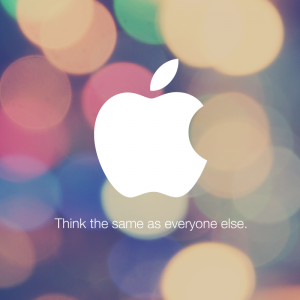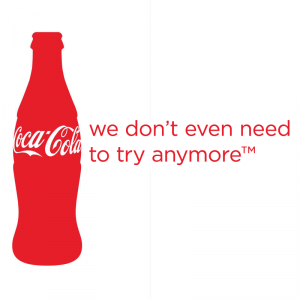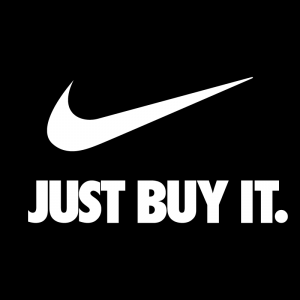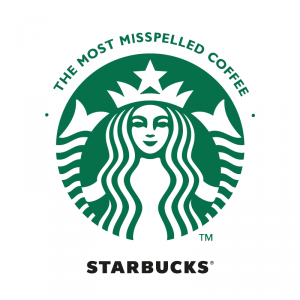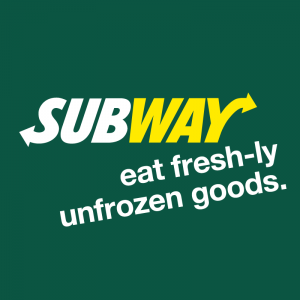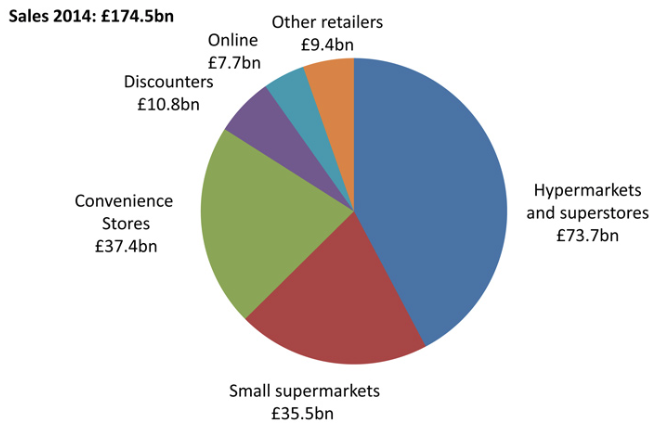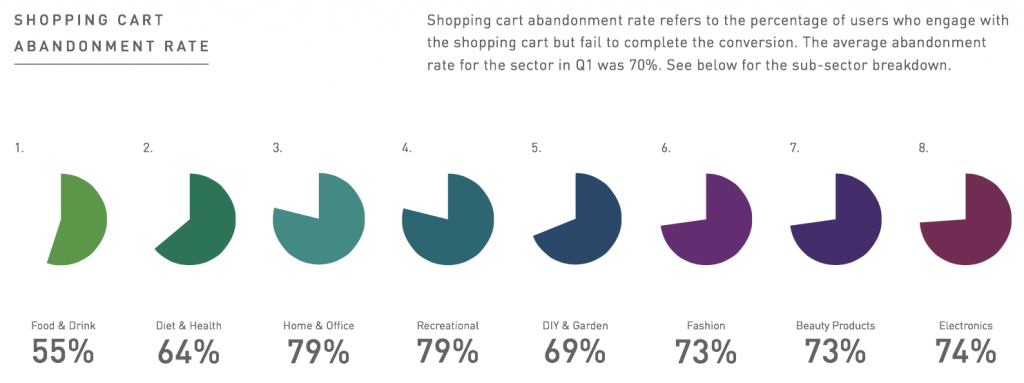Hello there, to celebrate our new brand launch we thought we’d have #brandchallenge with a twist.
We’re pretty pleased that our new identity reflects a slightly more grown up underscore now we have turned 15 years old, and allows our work to fully speak for itself, but what would you have done if tasked with the same exercise?
For a spot on our talent radar (& a bottle of pre-Christmas bubbly), please tweet us @underscorelive or send your submissions in a pdf format to hello@underscore by no later than Thursday December 11th. Good luck!!!
It looks a little different here now, but what better time to sport a new look than in our fifteenth year milestone. We’ve entered into a more refined and established positioning, and it’s coincided with a host of new account wins and major upcoming project deliveries for clients such as Gatwick Airport and The Body Shop.
More than simply rebranding our world, we’re evolving with the changing nature of the environment we all live in. It’s alive with colours, ideas and inspiration, and so are we.
Since the beginning we’ve been about getting underneath brands and adding weight, and while this will always be our backbone, our story has become more than simply method and approach.
Our story today is exciting, because every day we are Inspiring Brand Connections that resonate in the collective mind but belong to the personal heart. We’ve encapsulated this thinking within a client facing roadshow that shows what new communication looks like with inspirations coming from augmented reality, digital applications, drones, videos and much much more.
And this is the story that will be evolving across our website, social media, and of course in person with every new brief and every new challenge that is brought to the door of our Oxford Circus HQ.
Welcome to our world.
“Never appoint anyone as Chief Innovation Officer. It’s terrible. Innovation is everyone’s responsibility.”
These were the words spoken by Coca Cola’s VP of Marketing Europe, Javier Sanchez Lamelas, at the 2014 London Festival of Marketing. He quite accurately said that too many brands rely on one person to drive innovation, when in reality the brands that adopt a shared approach towards innovation are the brands that are already succeeding in the future.
Over two jam-packed days at Tabacco Dock, many powerful ideas, concepts and visions like that of Coca Cola were shared by some of the best and brightest of the industry. And as the polished brand managers and edgy creatives nursed a sore head from two days of marketing insight overload (& perhaps a few too many wrap party drinks) we found ourselves looking back at five key speakers in particular.
Professor Green
We were surprised from the very outset to see Professor Green featured as a guest speaker, but what an absolute stand out he was. Tasked with covering the topic of maintaining credibility and authenticity in a highly commercial world, Stephen spoke from a very real place.
Artists (the good ones) are very selective in their brand partnerships these days and the age of being considered a “sell out” has just about gone. For Stephen, partnerships with brands such as Puma allow him to maintain his creative freedom and naturally fit the brand into his lifestyle.
As artists start to favour the respect, freedom and money that brands can offer, record labels run the risk of losing relevance and power in the future.
Coca Cola
Coca Cola’s VP Javier covered global marketing execution, which for him was about breaking a number of paradigms. Before he challenged the perceptions of innovation and responsibility, and quite accurately declared the role we all have in driving this for our brands, he started first with reminding us about where brands belong – the heart.
Emotional connections have been the basis of every campaign success for the company, seen best in the ‘share a coke’ concept that saw people all over the world sharing an experience, rather than simply a drink.
The Government Digital Service
Creative Director at The Government Digital Service, Russel Davies, was yet another surprise highlight. We didn’t expect him to be one of our top five but his dry humour had us in stitches as he delivered a number of solid truths. Number one focus for Gov.UK (& a number of complex brands should take heed) is that before you can be innovative you must first fix the basics. An amazing brand with a beautiful website can still result in a poor customer experience if the user journey is challenging.
Users are becoming more powerful and they need to be considered first and foremost with simplicity. Refine content so that whatever they’re seeking, they can find it within seconds.
Adobe
Adobe’s Solutions Consultant (or Social Media guru as we’d have called her), Meghan Falter, hit us with five predictions for social in 2015. The talk attracted a big crowd and Meghan delivered the following predictions.
1. Openness is leaving the building
– consumers are moving towards anonymous sharing platforms
2. More complexity will increase focus on core social networks for brands
3. Capturing brand conversation will become more visual
– Platforms such as Snapchat and Pinterest are seeing the rise of people sharing brand images rather than brand names, which will see an even greater emergence of visual tracking methods.
4. Users replace algorithms
– Users will control when and where they open and engage with brand content.
5. Fewer free lunches for brands on social
Interesting to note that the very next day after Meghan’s presentation, prediction number five crept even closer to reality with Facebook announcing that in January they will begin cutting the organic reach of any brand page posts that it deems “overly promotional”.
Selfridges
Head of Marketing for Selfridges, Claire Higgins, covered maintaining customer experience in the physical world and bringing digital to life. Here Claire showcased how the business has championed Beauty with key industry personalities and delivered it in digital environments such as Google+ hangouts.
Claire then explored how digital has become part of their physical experience through elements such as in-store augmented reality, featured in their January concept store that allowed customers to see watches appear on their wrists. Selfridges is now looking to bridge the gap between online and in-store personalities and customer journey into the future.
Artists at work.
Underscore designer Natalie Harris, recently attended the Henley literary festival event ‘Rock and Rioja’ which featured the photography of Scarlet Page, daughter of Led Zeppelin guitarist Jimmy Page. Having made its debut at the Royal Albert Hall earlier this year, photographer Scarlet Page’s Resonators exhibition went on display at the Old Fire Station in Henley. From music legends like Brian May and Paul McCartney to modern-day icons like Noel Gallagher and Paul Weller (as well as Scarlet’s dad, Led Zeppelin’s Jimmy Page), this collection of stars and their guitars was not to be missed.
A recent report by Samsung, ‘Future Shoppers’, has stated that retailers need to rethink their in-store experience for younger shoppers to avoid missing out on bricks-and-mortar sales.
Delving into the shopping experiences of the 16-24 year old market, the report suggested that high street is in “a state of flux” and that stores must become ‘Retail Theatres’ to bridge the gap between online and offline identities of digital natives.
Currently, 74% of future shoppers say that while they usually end up buying a product online, they enjoy being able to see it first-hand at a retail outlet before they commit. And even when they’re out shopping, 61% will use their mobile to research a product they’re interested in.
This behaviour has divided stores into two categories a) Retail theatres, where innovative store experiences engage shoppers to convert to sale and b) brand showrooms, where shoppers are merely presented with products that they rationalise as a cheaper purchase online.
While online shopping is clearly the default for many, a significant number of 16-24 year-olds are frequenting stores on a near-daily basis. That presents a clear opportunity for retailers of all kinds and the trick, of course, lies in knowing how to engage those shoppers in the right way no matter which channel they opt for.
So how do you engage future shoppers?
The report found that 44% of the market actively visits retailers who enhance the shopping experience with technology. They also found that 79% want that technology to deliver vouchers or discounts from smartphone apps.
1. Don’t underestimate the sophistication of young buyers
The 16-24 year-olds of today, while somewhat limited in their spending capacity, will ultimately come to shape the future of retail. And there is no mistaking that tomorrow’s shoppers are confident, clever, and ultimately highly complex.
As a result, the retail experience is becoming increasingly non-linear, with multiple touchpoints creating challenge and opportunity in equal measure. Retailers that can successfully engage young shoppers across the whole buying cycle – not just one or two points along the way – will reap the rewards.
2. Don’t just replicate the online experience
With online becoming the go-to standard for many young shoppers, it’s tempting to try and transform physical retail space into a real-world interpretation of an online site. But to do so is to miss the point of what future shoppers are really looking for.
Currently, 63% of shoppers have downloaded a retailer’s app — and a third of those say they rarely use them. This is hardly surprising when the most common apps are designed for simply store location and product information.
Young adults have a clear understanding of the individual benefits that each of these channels offer, and are not looking to make a choice between one or the other. Instead, they want unity between the two, and a system that makes it easy to browse and buy no matter where they are.
Those retailers that can provide this seamless experience are most likely to gain the loyalty and continued custom of tomorrow’s shoppers. Those that don’t, run the risk of becoming outdated in the eyes of this empowered demographic.
3. Use technology to be useful and stand out
Young adults are smart enough to see past attempts to use technology as a way to make a store seem modern or cool. Tech is viewed positively by this demographic, but only when it is used constructively and with purpose.
Unless it makes their experience better – no matter whether that is purely functional or in a wholly visionary way – they are unlikely to engage.
Those retailers that can find the sweet spot of providing technology that not only brings their physical environment to life, but also provides young shoppers with a compelling reason to use it, will enjoy the benefits of a connected, engaged clientele – both now, and in the future.
Underscore thought leader:
Rachael Bradley, Strategic Account Executive.
Read the Full report
Video marketing is fast becoming the most popular approach to message delivery in the modern age and businesses are sharpening their game to reap the rewards. So how can you create something memorable?
Currently worth £325m a year in the UK, video marketing has experienced a growth of 63 per cent year-on-year according to a recent ad spend report by The Internet Advertising Bureau. By 2016 online video traffic will account for 55 per cent of all global consumer Internet traffic, according to Cisco.
Here are five ways you can enhance your competitive edge through video marketing right now:
1. Know your audience
Thanks to the dwindling attention spans of the 21st century, you have approximately 20 seconds to engage with your audience. This means it’s crucial that your brand message is delivered in less than 20 seconds or that you give your audience a reason to keep watching. Of course, both approaches involve truly knowing your audience.
This also applies for B2B purchasers as they’re almost 50 per cent more likely to buy a product or service than consumers if they form a personal and emotive bond, according to a recent study by Motisa. As serious as the B2B sector is, businesses still want to be wooed in the same way as a consumer, and video is a powerful asset.
2. Use your real-time data
The real-time data that social platforms such as Twitter, YouTube or Facebook can provide is invaluable to marketers. If a user clicks on an online video, you can instantly find out what they liked about the campaign and assess its successes, failures and opportunities.
This data, previously unattainable with traditional advertising campaigns, provides an exact breakdown of ROI, enabling you to crunch critical insights into the success of a campaign. You can respond in the short term by devising social engagement strategies around the results, and in the long term by rethinking your next campaign.
3. Maximise cross-platform reach
Marketers can no longer rely on one platform. A recent study by Nielsen found that consumers were 64 per cent more likely to recall an online ad compared to just 46 per cent who had memories of a TV ad.
Human behaviour has evolved and all brands are trying to adapt to a new converged world where customers engage with ads on TV at home, on tablets during the morning commute, and pretty much non-stop on their mobiles.
Mobile, in particular, looks set to grow majorly over the coming years. The total mobile advertising market was worth £1.031bn in 2013, compared to £528.5m in 2012, according to the IAB/PwC internet advertising report.
4. Think big, think ‘future’
Video is the future, you know that, but what does the future look like? Whilst we can’t be definitive on this one, you can look at what technologies are being tested in the market. One innovation in particular is a concept based off virtual reality headsets, known as Oculus Rift, which may sound funny now but Facebook were very serious in spending £1.2b to purchase the technology. Competitors such as Sony are already working on their own devices, and industries such as commercial aviation have suggested adopting the technology to revolutionise the in-flight experience.
5. Connect emotionally
Rational thoughts are often converted into real connections by the emotional mind. The best way brands can achieve this is through story, which equates to long-term value through loyalty.
Every Christmas, the UK’s biggest FMCG retailers battle it out with their respective festive ads. In an analysis of last year’s ads by TNS UK, it found that 63 per cent of Brits were positively engaged and 36 per cent motivated by John Lewis’ £7m animal-themed bear and the hare Christmas animation. These were higher levels than Tesco, Morrisons, Aldi and M&S.
People are still shopping at John Lewis due to the quality of that advert, and its tug-at-the-heart-strings animation. If you trigger the right emotive levels in a viewer it will nearly always translate into greater interaction and sales as it makes a brand feel relatable on a human level.
If you do choose to run an emotive story, make sure you get it right. Heavily panned for being sexist, Asda’s 2012 Christmas family ad featuring a “mum in the kitchen” portrayal of Christmas dinner, resulted in like-for-like sales falling to 0.1 per cent in the 14 weeks to January 15, 2013. In comparison, like-for-like sales stood at 1 per cent growth over the rest of the year.
Video has the power to make very real connections that encourage people to experience something personal. Every industry has the opportunity to make it work for their audience, no matter how serious their brand story may be.
Brought to you by an underscore thought leader:
Rachael Bradley, Strategic Account Executive.
Last week we gathered the team for our Friday afternoon #brandchallenge, taking on the widely popular concept of “honest slogans”.
In keeping with our #brandchallenge rules, we gave six of our creatives ten minutes to respond to the brief – creating slogans for six of the world’s most iconic brands. The results were honest and raw, and had everyone in stitches, so we’re sharing six of the best creations here.
Perhaps the real honesty that we created is not a reflection of the brands themselves, but the people (like us) that connect with them every day!
Customer experience is the ultimate test of your brand, and in a world where brands are being tested every second of the day, there’s no second chance for an experience that doesn’t match expectation.
We’ve worked with clients for many years now to align a brand to its experience, and as we move towards 2015 we’re taking this to a new level. This is a snapshot of the customer experience that we’re focussing on; touchpoints will always be key and are only becoming more innovative thanks to technology
It’s a matter of asking yourself what is happening before, during and after your customer experience. It all counts, and we’re currently working with clients to help them to innovate and lead a whole new approach to customer experience.
Watch this space.
Brand Experience from Underscore Design on Vimeo.
“Finally, after a decade of transformational impact on other sectors of the economy, the new frontier of e-commerce has come to food. Ready or not, our industry must do a much better job of leveraging this channel.”
Campbell Soup Co. CEO Denise Morrison candidly delivered this statement last week to analysts at the company’s investor day, acknowledging the untapped potential for food and beverage marketers in the online space.
While consumer brands have long since existed in the online world, just about every market sector has performed better than Food & Drinks. In the year to April 2014 the UK grocery market amounted to £174.5 billion, which was an increase of 2.8% on 2013, and yet that same portion of the market claimed the smallest share online.
A mere £7.7 billion of the £174.5 billion total came from online sales, which explains why the Food and Drinks category sat at a 5.5% share of the online market in 2013. It’s hard to determine whether this is the result of low consumer demand, or if it’s food retailers simply not driving the right experience into their online channels. But what we do know for sure is that the Institute of Grocery Distribution forecast the UK grocery market value to be worth £203.0 billion in 2019, which means online will naturally witness a comparable growth.
The biggest force behind online retail sales growth will come from the older generation of consumers. While younger consumers have been faster to adopt ecommerce, they are still struggling with the weakened economy, and therefore retailers are best to align their strategies with those aged 55 and over.
The older generation have been less affected by economic downturn, and the number of online buyers in that age category is expected to rise by 5.5% this year, and a further 5.0% in 2015. They are expected to continue to grow faster than any other age category through to 2016, so how will marketers adapt?
Overcoming the executional challenges of online grocery selling requires considerably different marketing strategies than those used in physical stores. The tactics of promotional spending and freestanding inserts just don’t work; the e-marketer must accept a world where search is the new shelf space and the online retailer controls the consumer relationship.
Online retailers are up against Amazon as a major player in the online grocery world, and packaged goods marketers are up against each other to even be seen on the site. Adage recently reported that Amazon’s search algorithms reward brands that get the most clicks and sales, which have been referred to as a “democratization” of shelf space. It means that once brands reach the top of the search results, it’s hard to dislodge them because that placement alone will drive more clicks and sales.
Carefully managing product pages, using visuals and key phrases to drive search results, and directly responding to negative consumer reviews are a packaged goods marketer’s best bet at working with Amazon’s system, but the competition here will remain fierce.
Online retailers in general will also have to review why 55% of Food & Drinks consumers abandon their shopping carts prior to checkout. While this ranks comparably better than other sectors, the opportunity presents to explore the cause and how to best address it.
It could mean a review of how inspiring your experience is and offering customers incentives and rewards that convert them into a sale at check out, or it could even be a revision of your check out facility operates. Consumers will not bother with overly involved or complicated check outs systems.
Whatever your approach, the opportunity to take a fresh perspective on online food retail has never been better. Brand connections are changing and inspiration needs to be present in both your physical and online offering.
Brought to you by an underscore thought leader:
Rachael Bradley, Strategic Account Executive.
Source 1 Adage
Source 2
eMarketers
Source 3 IGD
Source 4 veinteractive
A new app trialling in Amsterdam could mean we’re on the cusp of a major shake up to the agency pitching game.
In a Tinder-like swiping fashion, modern marketers are able to easily ‘flirt’ with agencies to create shortlists for their pitch.
It’s a win for smaller agencies that will be grouped in a level-playing field with the bigger, more widely known names, but what does this mean for the overall pitch-picture? If agency shortlisting becomes a quicker, less-involved swipe & go process, then perhaps the same will be expected for the physical pitch turn around.
Pitching, production and delivery could all be about to get a whole lot faster, and at Underscore we’ve been rigorously refining our response and delivery processes so we can remain at the leading edge of industry change.
Pitcher – Tinder for Marketeers from Woedend! on Vimeo.
“Great storytelling isn’t easy, but if done well, it can be more powerful and motivating than any other kind of content.”
Andrew Davis, best-selling author of “Brandscaping: Unleashing the Power of Partnerships” made this statement last week when he took to the stage for Content Marketing World 2014. In fact he shared a number of valuable insights, but four secrets in particular are worth their weight in gold.
Before we get to the ‘how’, it’s important to first understand ‘why’ – why storytelling is valuable and why
Moments of Inspiration lead to Return on Investment.
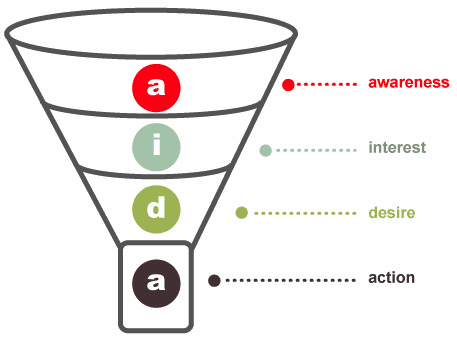 Davis highlighted that we have a funnel problem. He referenced the diagrams by Elias St. Elmo Lewis (circa. 1898) with the intent to show the factors that drive consumers to buy – that these days instead of thinking like consumers, marketers keep reinventing the funnel.
Davis highlighted that we have a funnel problem. He referenced the diagrams by Elias St. Elmo Lewis (circa. 1898) with the intent to show the factors that drive consumers to buy – that these days instead of thinking like consumers, marketers keep reinventing the funnel.
Websites, whilst incredibly important, are not the first port of call for a consumer online; Google or “search” is.
Davis illustrated his point through a typical search, which in this case is the journey of Meatloaf. In a Moment of Inspiration, a Google search for comfort food led him to 2,200 images of meatloaf from which he thought, “I’m hungry for meatloaf”. What came next was the Trigger where he decided “I’m going to make Meatloaf for dinner”. Then came the Initial Consideration Set of “Allrecipes.com must have good meatloaf recipes” where he found one recipe with 22,000 people rating it four stars and thought “This must be a good one”.
But it didn’t end there, next came the Active Evaluation:
1. “I’ll check Yelp to see what’s available in town first.” The reviews didn’t offer anything impressive.
2. “I’ll Youtube how to make Meatloaf”. The ten-minute tutorial suggested researching for a good Meatloaf pan.
3. Searches Amazon for a Meatloaf pan.
4. Wonders how many calories are in meatloaf. Discovers there are over 1,000 calories.
5. Joins the “Meatloaf sucks” Facebook group.
6. Looked for references to meatloaf on Twitter, which included Meatloaf, an artist he likes.
Then came the Moment of Purchase …Davis purchased tickets to Meatloaf and is right back where he started.
Many companies are great at the point just before the Moment of Purchase when people are actively comparing their brand amongst others, but there is far more value in creating moments of inspiration that trigger irresistible acts in the mind of the consumer.
Davis referenced Chuck Williams, founder of Williams-Sonoma, who once said, “We don’t sell the drill or the drill bit, we sell the hole.” When the company distributed thousands of catalogues showcasing expensive, premium cuts of meat, but received very little response, Williams demanded to see a copy and was in turn livid. “Who wants to eat a raw piece of meat? People don’t want to eat raw meat, they’re inspired by steak,” he said. “This is what people want.”
It brings us back to the point that Moments of Inspiration lead to Return on Investment, and achieving this can be done through these four considerations:
1. Build suspense: Create anxiety about what will happen.
Breville, an Australian maker of high-end juicers, sponsored a Netflix series called “Fat, Sick and Nearly Dead,” about an obese man trying to lose weight. When the series started airing, it prompted a wave of inspiration and Breville Juicers sold out worldwide. Davis suggested, “Ask yourself, ‘Is there inherent suspense in the story I’m telling?'”
2. Foster Aspiration: What does my audience aspire to do or be?
When DCVelocity.com, a specialised website for logistics & distribution centers, started posting a half-hour show called “Move It”, which took viewers on a factory tour, the show not only boosted sales of belt sorters and other specialised equipment showcased, it was also picked up by Japanese public television.
3. Drive Empathy:
IBM was transitioning from a manufacturer to a service provider in 2011 and created a robot named Watson to facilitate understanding. Watson could play “Jeopardy!” and IBM challenged it to beat two human trivia champions. The interesting response from viewers was not that they cheered for the robot, but that they felt bad when it missed a question.
IBM created content around it, and Nova created a PBS special called, “The Smartest Machine on Earth. Following the special airing, IBM witnessed a boost in calls asking for its expertise, which sparked a 20% revenue surge in a single quarter. IBM continued to leverage Watson as a content generated for many years after that.
4. Harness emotion: Harness emotion and you’ll inspire people to act.
When a Danish TV show called “Arvingerne [the Legacy]” showed the heirs of a matriarch squabbling over her inheritance, viewers started calling lawyers about creating wills and estate-planning.
“Stop creating campaigns, and start making a commitment to tell a valuable story – a story that’s bigger than you,” Davis said. That’s more important than how many likes, favourites or followers somebody has.
Davis concluded by asking what emotion inspires action that relates to your product or service, and this is our reason for sharing. At underscore we approach every branding project with a goal to get an appropriate emotional reaction from our clients’ audience that can achieve immediate cut through and helps us to build a customer relationship for the longer term.
Brought to you by an underscore thought leader:
Rachael Bradley, Strategic Account Executive.
Original Source: Janet H. Cho
From Andrew Davis at Content Marketing World 2014
Image Source


